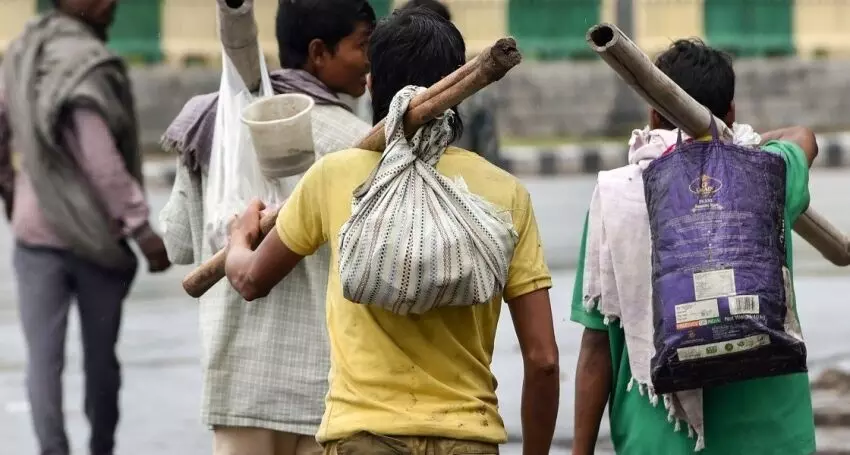Loaded with ambiguities

The Periodic Labour Force Survey (PLFS) report, 2017, had marked India’s unemployment at 6.1 per cent, which declined to 4.1 per cent in PLFS 2021-22. Earlier this month, the PLFS report 2022-2023 revealed that India’s unemployment rate stood at a six-year low of 3.2 per cent during July 2022-June 2023. Addressing the Kaushal Deekshant Samaroh of the union Ministry of Skill Development and Entrepreneurship, the Indian Prime Minister highlighted that India's expanding economy is creating new possibilities for the youth. He also hailed the inclusive nature of this development, as opportunities are being created both in rural and urban areas, and for both men and women. The positive trend reflected over the years in the Periodic Labour Force Survey may, however, be telling just a fraction of the story — not completely reflective of the broader reality. Contradicting the PLFS report are numerous other findings that show an otherwise trend. An example in case is a recent Azim Premji University report stating that about 42.3 per cent of graduates under 25 were struggling to find work in India during 2021-2022. A more disturbing comparison it provides is that the number of unemployed graduates under 25 was double that of youth with just higher secondary education. Just a week preceding the release of the PLFS report, the Centre for Monitoring Indian Economy (CMIE), based on its Consumer Pyramids Household Survey, stated that the unemployment rate in India fell to 7.1 per cent in September 2023 from 8.1 per cent in August. CMIE further reported that the decline in unemployment rate came alongside a fall in labour force participation rate (LFPR), which came down from 41.2 per cent in August to 40.9 per cent in September. One can clearly witness the disparities in the unemployment figures presented by different entities. Even the data compiled by the National Sample Survey Organisation (NSSO) is based on more than one procedure — presenting results that may not be mutually conciliatory. The stark dichotomy in these sets of data can be traced back to two different aspects — the complex nature of India’s employment structure, and different methodologies deployed to arrive at different sets of data. Towards the end of the last year, the International Labour Organisation (ILO) had stated that nine in ten workers in India are employed in the informal economy. These workers are often invisible to the system and are at increased risk of exploitation. This invisibility could be a major concern for policymakers. Against this highly ambiguous background, the starkly different unemployment figures present an overall chaotic picture. The ILO also highlighted that India has one of the lowest labour force participation rates in the world and the lack of formal employment opportunities. Unemployment, as defined by the ILO, occurs when people are without jobs and they have actively sought work within the past four weeks. This is different from joblessness. While unemployment is a specific and formal measure of people actively seeking work but unable to find a job, joblessness is a broader term that includes all individuals who are not currently employed, regardless of their job-seeking status. Evidently, India’s poor Labour Force Participation Rate (LFPR) leaves a large grey area in which the clear assessment of the exact employment scenario becomes elusive. This grey area is often targeted by political parties across the spectrum to score brownie points — a trend that is likely to see an upsurge in the environment of upcoming state and general elections. This scenario, however, will have a blinding effect on policymaking — leading to inaction. It may be noted that India’s poor LFPR comes on account of dismal participation of women. As reported on World Bank’s Gender Data Portal on January 10, 2022, while the global labour force participation rate for women was just over 50 per cent, India fared still worse at around 30 per cent. At the same time, India’s male labour force participation rate was at par with the global average of 80 per cent. In India, the gap between male and female labor force participation has been more than 50 percentage points. Irrespective of what the government claims, there is no denying the fact that the problem of unemployment is palpable in India. While employment in the formal sector has a poor standing, the exact assessment of the huge but loosely defined informal sector is not even possible. In a country plagued with widespread social and economic inequalities, the livelihood of millions of people cannot be left on the mercy of market forces. Proactive and direct support of the government is an imperative. Furthermore, if worked upon, an increase in female labour force participation rate can go a long way in improving the employment scenario in India.



